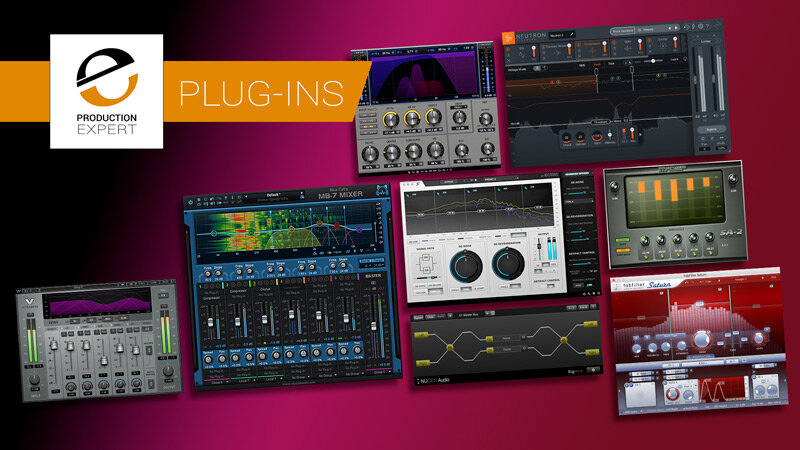

Multiband compression is an advanced type of compressor which splits the frequency spectrum into several independent bands with adjustable crossovers for setting a band's range and width. Each band typically has dedicated compression settings for threshold, ratio and time constants. You can have more control over your dynamics using multiband processes, meaning for example you can dial in an aggressive amount of compression on the low end of a master while gently processing the airy top end.
Some find the concept of multiband compression difficult to understand, especially as dynamic EQ seems so similar. To learn the differences between the two check out our article Multi-Band Compression And Dynamic EQ - Do You Know The Difference? Many People Don't

Multiband compressors and dynamic equalisers both do similar jobs. How do they differ and which should you use and when? We investigate both categories and explain the similarities and the differences.

In this article, Julian looks at dynamic EQ’s and chooses 5 to highlight, though he stretches the category a little beyond what many would think of as a dynamic EQ.
Later in this article we’ll share some multi-band compression plug-ins we love but first, besides compression, what else can multi-band processing be useful for in a mix? Below are several examples of how multi-band is helpful across different plug-in categories.

ERA-D by Accusonsu is a powerful and simple to use noise and reverb suppression plug-in which utilizes multi-band within the main display at the top of its UI. The denoise module is a fully adaptive processor which means there is no need for users to set a learn feature for noise-profiling, The dereverberation module is as impressive both producing very transparent results. Both denoise and dereverberation engines can be used in mono, stereo or dual-mode.
The large dials in each module are wide band which effect the entire spectrum. Each of the five available bands can be used to quickly hone your noise suppression further by use of the vertical sliders and small blue dials. The ballistics also show clearly the levels for noise and reverb reduction compared to the dry signal. Watch our free video tutorial below to hear ERA-D in action.

Avid’s Pro Subharmonic is a sophisticated plug-in which is both a weakness and a strength depending on your point of view. While some Sub-bass enhancement plug-ins offer a resonant hight pass filter or a band of sub bass synthesis, Pro Subharmonic offers high and low pass filters, two independent bands of sub bass synthesis and some great sounding overdrive to give all that deep stuff the right amount of audible “rub”.
With surround support it’s perfect for theatrical booms and thumps, it is just as at home on kick drums and if you want to get clever it can be controlled by MIDI to create a sub bass synth to fill out the bottom of your synth patches.
Watch our review and tutorial videos below learn more about Avid’s Pro Subharmonic plug-in and to hear it in action.


Blue Cat's MB-7 Mixer is unique, enabling users to host VST plug-ins within a multi-band format. This is a popular plug-in choice for Pro Tools users as it makes it possible to host VST-only plug-ins in AAX. Each of its seven available bands feature general mixer controls for volume, pan, mute, solo, stereo spread and more.
The magic within this plug-in, besides its VST hosting capabilities, is found in its ability to stack up different effects in each band. MB-7 Mixer also includes 28 built-in effects in case you are short of a few plug-ins. Up to four plug-ins can be loaded per band with the option to insert pre or post fader.
In short, mix possibilities are quite literally endless using MB-7 Mixer. Watch our video below to learn more and to see MB-7 mixer in action.

FabFilter’s Saturn is a complete saturation and distortion suite which relies heavily on multi-band. By default the plug-in works in full-band mode which is powerful enough in its own right but dive through many of the excellent presets and you will find out how multi-band can be very useful in dialling in tasteful crunch on a drum mix bus, overdrive on a guitar or gentle tube drive on a full master.


Ever since the earliest days of iZotope’s popular mastering suite Ozone, multiband has played a huge role in their software. Going back as far as Ozone 3 multiband was used in exciters, stereo width tools and of course dynamics but these categories have expanded over the years to include so much more. If you use Ozone, Neutron or Nectar, you will find multiband features used in most of the modules in these suites. Advanced versions of all of the products go one step further offering each module within a suite available as standalone plug-ins which is handy if you need a specific multiband tool for a mix task.

The SA-2 is designed to improve the overall sound of recorded speech. But the SA-2 is not just for dialog. It’s equally useful for vocals, and is a great tool for adjusting the timbre of any track, a reliable de-esser, and a fine multi-frequency compressor, in our completely biased opinion.
The SA-2 Dialog Processor is made up of 5 bands of strategic active equalization, configured in a variety of modes to best address common issues of dialog. Each band of active equalization has a threshold control to determine at what signal level the active equalizer begins to effect the signal. There are also enable buttons for each band to quickly audition the effect of any given band. Two mode selectors – one for controlling the ballistics of the active equalization, and a second for placing the five bands at strategic locations in the frequency spectrum. Finally, there are input and output gain controls for overall adjustment.